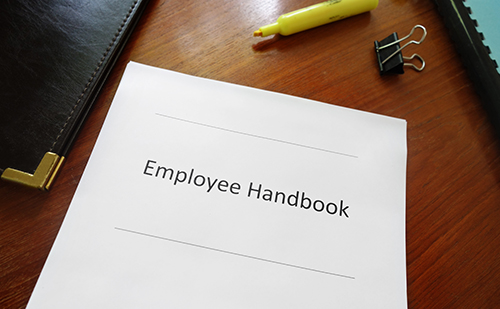Our clients operate all different kinds of businesses, from medical practices, to marketing firms, to small manufacturers. It’s amazing that many of these businesses operate without an employee handbook, or if they do have a handbook, it’s been adapted from a cheap online template that really doesn’t protect them.
Each Business Has Unique Needs
Every business needs an employee handbook outlining policies and procedures specifically created to suit its operations and its employees. A handbook template, while it may cover the minimum compliance requirements, won’t be able to address unique operational needs. The employee handbook is usually the first place that workers go for information about important things such as vacation time, expense reports, sick leave, health insurance, etc. Therefore the handbook and personnel policies need to provide both a positive first impression and enough information to direct employees to the right supporting documents, such as the health insurance plan.
When it’s properly designed, the employee handbook can eliminate a lot of questions and concerns, and can actually help define the corporate culture. It also helps protect you as the employer from a legal standpoint, providing written guidelines and rules that are defensible in the event of an issue over, say, promotion policies or vacation time. It provides clear guidelines for things such as expense reports and raises to eliminate uncertainty around what could be problematic gray areas. And wisely chosen benefit policies will both help retain good employees, and help control skyrocketing benefit costs.
An Employee Handbook Can Eliminate Questions and Concerns
There are so many little issues and concerns that can be easily addressed in a well-designed employee handbook. You need to consider the company’s finances and cash flow, employee retention strategies, corporate culture, and compliance issues. You also need to customize the handbook to accommodate the size of the company, managerial hierarchy, number of employees, and benefits offered.
If you create a solid employee handbook, it can serve multiple functions, including:
- Providing employees with important information about the company, its practices, and its work environment.
- Providing legal protection to employers by setting clear expectations and standards for employee behavior and compliance.
- Providing financial protection to employers by outlining benefits policies that are reasonable and that promote employee retention, and establishing guidelines around expenses.
If you don’t do it right, an employee handbook can do more harm than good. For example, policies and procedures can be too rigid, limiting a manager’s flexibility in dealing with things like performance issues. And if the policies are too general, then it’s difficult to hold employees accountable for misconduct or infractions of company policy.
It’s important to get professional insight to strike the right balance. You want to use your employee handbook as an extension of your company brand and culture, but you want to make sure it does the job when it comes to outlining policies and procedures and providing an appropriate level of protection. Developing an employee handbook is a task best left to experienced professionals, and it’s something that no company should be without.


